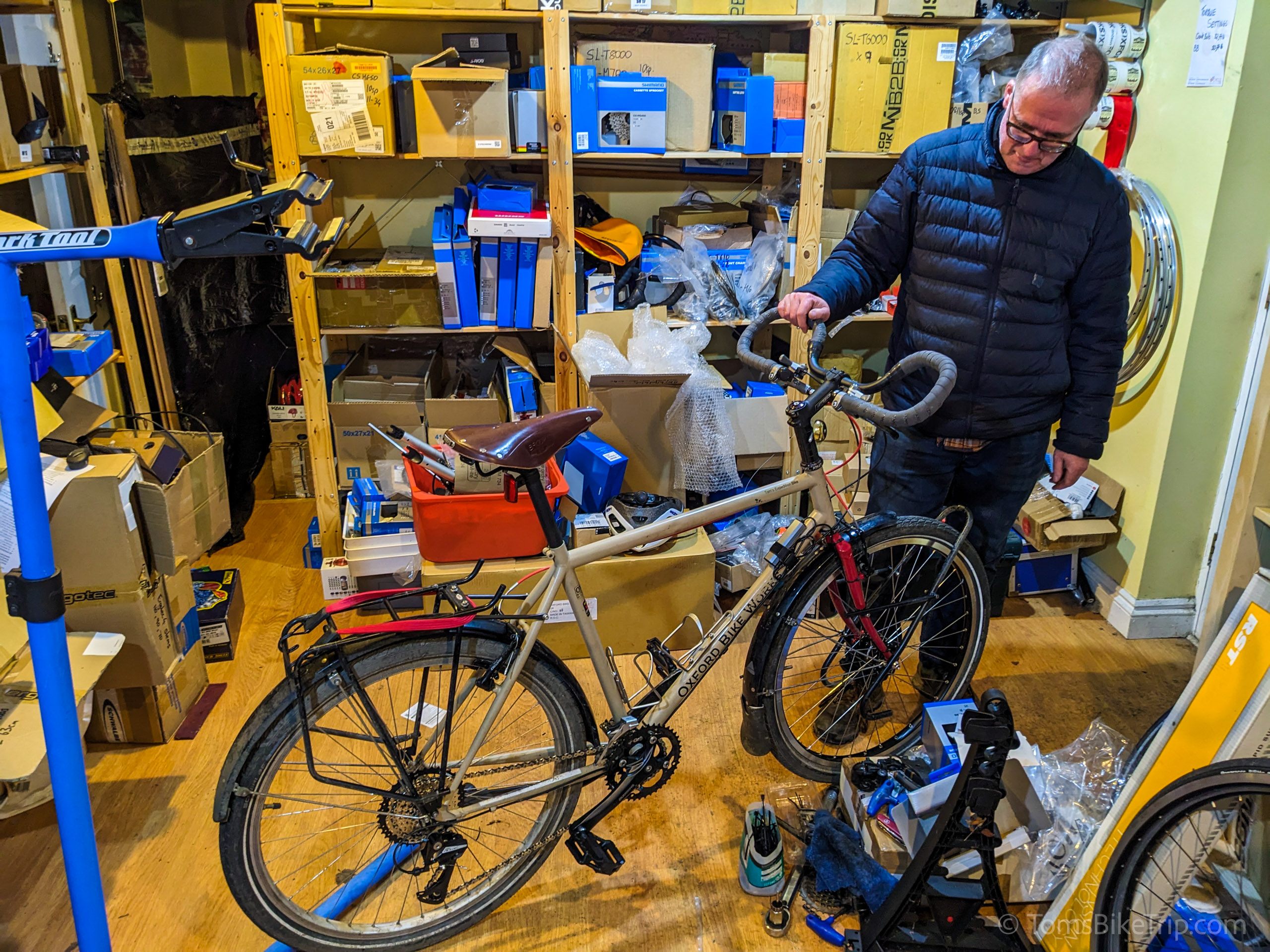Headsets For Expedition Touring Bikes
Frame and forks are wedded together by means of a headset. This is a stack of bearings, races and seals that is pressed or tapped into each end of the frame’s head tube to allow the fork to rotate within the frame and thus for steering to happen.

Being an interference fit, the headset is the most ‘permanent’ of all the components fitted to a frame. While it’s possible to remove, overhaul and refit a headset on the roadside, it’s not the kind of thing you’ll want to be doing – not least because it’s easy to damage your frame without the right tools.
Cheap headsets with cheap ball-bearings are fine for cheap bikes. Parts are readily available and they’re relatively easy to adjust and maintain. But most bike builders would consider them false economy when building a bike for fully-loaded long-term touring. A headset’s bearings experience a great deal of wear and tear in the expedition scenario. Fully-loaded front panniers, poor road surfaces, and the sheer volume of miles and hours spent riding will all work together to place increased forces over greater amounts of time upon the humble headset.
When considering most expedition bike components, we’ll be looking at parts which are not only simple and durable but also easily serviceable and replaceable worldwide. But the headset is one you’ll probably want to fit and forget about.

Back in 2015 when I first specced this bike, there was no question in my mind about which headset fitted the bill: a Chris King NoThreadSet threadless headset.
Of all the high-end headsets available, the Chris King had the longest and strongest track record.
In fact, this small Oregon-based machine shop was originally founded when Chris, then a young engineer, couldn’t find a traditional headset with durable enough bearings for his touring bike.
Clearly an overachiever, he responded by designing and building some of the most precise and durable headset bearings on Earth. In the process, he invented the much-imitated ‘threadless’ headset design, and set a standard of engineering quality that every other high-grade headset manufacturer has attempted to imitate since.
The original NoThreadSet has been made in Oregon and sold worldwide for over 30 years, surviving all of the bike industry’s attempts to de-standardise and diversify component design in order to make more money. Each unit originally came with a 10-year guarantee, and when practically none were returned, King upgraded it to a lifetime guarantee.
This goes a long way towards explaining how and why, back in the ’90s and ’00s, the product developed a cult following among downhill mountain bikers (another type of rider who routinely place extreme demands on their bikes).
It’s also why I felt the Chris King NoThreadSet was the only candidate for my ultimate expedition touring bike.

Rather than buy a new one for the prototype (at £245/$207 a go they aren’t cheap), I did what Chris King envisions all his customers doing: removed the headset from my old Kona Explosif and installed it on the new one. In other words, my prototype actually ended up with a headset that had been halfway round the world already. It was second-hand when I bought it in 2007, and it is still rotating as smoothly today as the day it left the factory in Portland.
Unfortunately, a decade later, the sheer cost of a new King headset has become prohibitive.
Yes, they are extremely good. But are they that good compared to a mature and time-tested range of very similar headsets from competing manufacturers?
Alternative headsets of a similar design – by which I mean headsets for unthreaded fork steerer tubes and with sealed cartridge bearings pressed into each cup – include the Hope Conventional 1⅛-inch headset (£105), the FSA Orbit MX Threadless (€87) and the Cane Creek 40 ($64).
They’re all modelled on the same design principles as the King and are considered to be high quality headsets. (Richard is currently using the Cane Creek 110 on new Expedition builds.)
When buying a headset, remember to get the correct size and type for your frame. Though head tube sizes have diversified a lot in recent years, for most traditional steel frames 1⅛-inch is the most common diameter.
Reviews, Installation Advice and Retailers for Headsets
- Read Park Tool’s illustrated guide to installing a threadless headset.
- Buy the Chris King NoThreadSet online in the USA direct from Chris King, or in the UK from Saddleback.
- For other worldwide retailers, check out the official Chris King dealer locator.


Something to add?